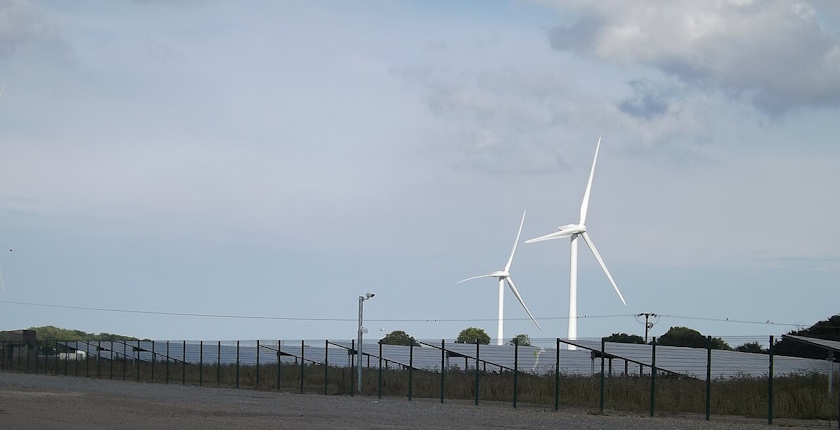
Photo: Geographer / https://creativecommons.org/licenses/by-sa/2.0/legalcode
Greece wants EUR 5 billion more from the European Commission from the Recovery and Resilience Facility, with an emphasis on energy transition projects. At the same time, Romania requested for a part of the funds from its National Recovery and Resilience Plan to come from the Cohesion Fund, so that it can meet the deadlines.
The European Union’s Recovery and Resilience Facility or RRF is worth EUR 723 billion. It is the largest component of the NextGenerationEU (NGEU) package, which was launched alongside the regular seven-year budget to promote green economic transformation in the 27-member bloc after the coronavirus pandemic.
Just over half of RRF are favorable loans, while the rest are grants. Much of the infrastructure spending plans cover renewable energy, energy efficiency and storage, grid development and electric mobility. The package is under the umbrella of the European Green Deal initiative.
Member states are obligated to finish all planned investments funded from the RRF in 2026 at the latest
Member states get installments as they pass milestones that they set in their national plans. They are obligated to develop the legal framework, liberalize markets, prepare competitive bidding procedures and see to it that all projects are done through 2026. It proved to be a difficult task for many governments. One of the examples is Bulgaria, which went through a severe political crisis, prompting five snap general elections in two years.
Another major shift occurred after Russia invaded Ukraine in February of last year. It prompted the administration in Brussels to accelerate the decarbonization push through its so-called REPowerEU plan. It is primarily aimed at phasing out and finding alternatives for Russian fossil fuels. Among some lingering sticking points are the negotiations on the status of gas and nuclear power investments, synthetic fuels for vehicles and emergency subsidies for energy consumers.
Greece asks for loans for green transition
As for the rest of the region that Balkan Green Energy News tracks, the dynamics vary. Greece and Romania have both just sent requests to the European Commission to change the recovery and resilience plans. The former asked for more funds while the latter is looking to provide leeway with regard to tight deadlines.
Until now, Greece has received an overall EUR 11.1 billion from the EU’s green emergency chest out of EUR 17.4 billion in grants and EUR 12.7 billion in soft loans that it is entitled to. Prime Minister Kyriakos Mitsotakis’s cabinet applied for another EUR 1.7 billion in May within its National Recovery and Resilience Plan Greece 2.0.
In its application, Greece highlighted the changes in market conditions
The European Commission said the government has now asked for EUR 5 billion more for the credit segment. The money is intended for the green transition, digitalization, export capacity, economies of scale and innovation. The 27-member bloc’s executive body added that Greece also argued it should adapt its programs to the changes in market conditions.
In addition, the government opened the REPowerEU investment chapter, with a proposed EUR 795 million. If the overall request is accepted, it would lift the spending plan to EUR 18.2 billion in grants and EUR 17.7 billion in loans.
Greece said it would allocate EUR 560 million to energy efficiency measures for homes and businesses and rooftop solar. A biomethane production and carbon capture and storage (CCS) item is worth EUR 150 million. The remaining EUR 85 million is for battery storage systems and pumped hydropower.
Romania is adapting to expected delays
Conversely, Romania asked the European Commission to switch the funding for some of the projects from its National Recovery and Resilience Plan (NRRP or PNRR) to the Cohesion Fund. It would allow the government to extend the deadlines from the end of August 2026 until the end of 2029. The investments cover the environment, rail and healthcare.
The country initially got EUR 29.2 billion approved, but now it is losing EUR 2.1 billion due to an unexpected acceleration in economic growth. On the other hand, the REPowerEU segment adds a potential EUR 1.4 billion to the sum, for energy production, storage and efficiency in households.
Romania got EUR 6.4 billion so far, though it distributed less than 5% of the approved funds. The country is set to receive almost EUR 2.8 billion this month.


















Be the first one to comment on this article.